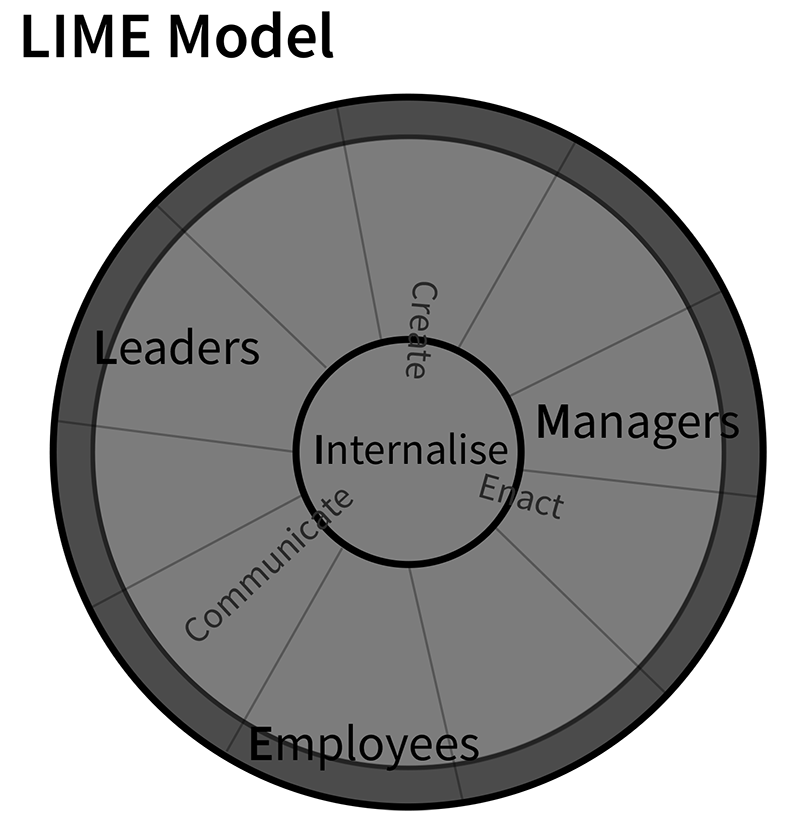By William S. Harvey, Sharina Osman and Marwa E.A. Tourky
We read a lot about the importance of organisations being led by their values, but what are values, why are they important and how can organisations identify and internalise them?
Values are the desired behaviours of employees within organisations. They are important because they influence the reputation of organisations. Employees are the face of almost all organisations, whether that is nurses in hospitals, teachers in schools, civil servants in government, solititors in law firms, or traders in investment banks. The behaviours of these employees has an internal impact on how their peers as well as how external groups such as customers perceive their organisations.
This is why internalising values should not be a superficial exercise of conjuring up a mission statement that no one knows or cares about. It should be about creating, communicating and enacting values that are relevant for your organisation, and ensuring that they are internalised through everyday behaviours.
We conducted a case study of a hospital in Malaysia to understand the process of how it internalised its values among its employees. Here are some of the things that succeded and failed.
So often we read fancing wording on websites, e-mail signatures, office window panes or on stationary about the wonderful values of an organisation. Unfortunately, often these values are created and imposed on employees by leaders. In our research, we found the senior leadership team in the hospital were very clear in their minds on what the values of the hospital were, but when it came to internalising, hospital employees rejected them because they had no ownership of the values, which they considered as disconnected from who they were and their roles within the hospital.
This caused a complete rethink of how to internalise the values. We organised and facilitated a series of workshops to empower employees across all levels of the organisation to identify the values that they considered as most relevant and important. The subsequent co-creation of values among employees, managers and leaders was an important process of ensuring people at different hierarchical levels were involved. This ensured their engagement and quickly led to clear and long-lasting employee behavioural change, which closely aligned to the values that they co-created.
Based on this research, we created a model for how organisations can internalise their values. We term this LIME where there are three important groups of stakeholders who enable values to be internalised: Leaders, Managers and Employees, and three aspects of how the values are Internalised: create, communicate and enact.
Leaders, managers and employees are all important for internalising values, but their roles are different. Leaders are particularly important for role modelling values and for publicly showing their engagement with those values. Hence, they play a particularly important role in creating and communicating values. Managers play a valuable role in communicating and enacting values through reinforcement, for instance in team or performance management meetings. Employees play a particularly important role in communicating and enacting values. They help to internalise values through observing the actions of and listening to other employees. When values are reciprocated between employees then this strongly reinforces the internalisation process.
Although every organisation has its own unique structure and culture, our model provides a heuristic for how values can be internalised. Despite leaders playing an important role in creating values, if they are implemented top-down then this is unlikely to gain buy-in elsewhere in the organisation. Equally, if the values are bottom-up then there is likely to be a disconnect between the values employees identify and the strategy set by leaders.
We advocate a diffuse process, which requires engagement from people across different hierarchical levels, including leaders, managers and employees. This approach helps to create positive perceptions of the values and support at different levels, ensuring that the behaviours of employees aligns with the values which have been identified. All of this is important for helping organisations to fulfil their purpose and to build their reputation.
This article is based on the research: Harvey, W.S., Osman, S. and Tourky, M. (2021). Building internal reputation from organisational values. Corporate Reputation Review.
About the Authors
William S. Harvey is Professor of Management and Associate Dean at the University of Exeter Business School. He is an International Research Fellow at the Oxford Centre for Corporate Reputation and Chair of the Board of Libraries Unlimited. Will advises leaders on reputation, talent management and leadership.
Sharina Osman is a Senior Lecturer and the Section Head of Tourism at the Universiti Kuala Lumpur Business School, Malaysia. She helps organizations in competency and capacity building through trainings and consultations particularly in Talent Management and Organizational Culture.
 Marwa E.A. Tourky is Senior Lecturer of Marketing and Programme Director of BSc Business Studies at Exeter Business School. She is on the Editorial Board of Journal of Marketing Communications. Marwa coaches business managers on how they can develop and enhance their corporate brand identities.
Marwa E.A. Tourky is Senior Lecturer of Marketing and Programme Director of BSc Business Studies at Exeter Business School. She is on the Editorial Board of Journal of Marketing Communications. Marwa coaches business managers on how they can develop and enhance their corporate brand identities.































![“Does Everyone Hear Me OK?”: How to Lead Virtual Teams Effectively iStock-1438575049 (1) [Converted]](https://www.europeanbusinessreview.com/wp-content/uploads/2024/11/iStock-1438575049-1-Converted-100x70.jpg)




